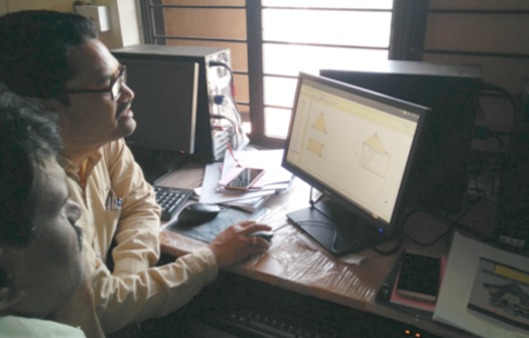As a part of the “Research on Open Educational Resources for Development” project, ITfC conducted an action research on a collaborative OER adoption project in Karnataka. In phase 2 of this project, ITfC studied OER use by teachers and developed a toolkit for state governments on collaborative OER adoption program, based on professional learning communities of teachers.
The first phase sought to study - “whether and how, a bottom-up approach, where Collaborative OER Adoption (COA) participants, 'embedded' in a 'professional learning community' (PLC) of teachers, collaboratively and actively co-create contextual resources, can support effective Open Educational Resource (OER) models.” The project was located in Karnataka state, and the model developed through this research is referred to as the ‘PLC-OER’ model.
The findings of phase 1 suggest that the collaborative OER adoption model effectively contributes to OER adoption and teacher professional development. This innovative model of teacher professional development was endorsed by a review mission of the Government of India and a few Indian state governments have contacted ITfC to implement a similar programme in their states.
The second phase of this project, titled “Scaling Open Education Resource Based Teacher Professional Development in India”, sought to improve the quality of teacher professional development in the Indian government school system, by up-scaling the OER model based professional learning communities of teachers in Telangana. The study covered the contextual factors that would affect the transfer of the model to adapt and refine the model.
The second phase had 3 components:
-
PLC - Studying the interactions within the PLC, including with the COA teachers to deepen understanding about OER adoption and the PLC-OER model.
-
OER use - Study the use of OER by COA and PLC teachers
-
Up-scaling of the OER model - Generalize and abstract elements of the PLC-OER model, through up-scaling the model in two other states in India.
Component 1 - PLC and COA interactions
This was studied using the analysis of mails shared in the PLC, focused group discussions conducted among the OER core group members, key informant interviews conducted with selected teachers, case study conducted of the STF program and the practitioners’ own reflections as action researchers.
Gurumurthy presented a paper on "Collaborative OER adoption by a PLC, a model of TPD", at the 'National Conference on ICT in school education' organized by the Regional Institute of Education, Ajmer (NCERT). The paper discussed the interactions within the PLC, including with the COA teachers to deepen understanding about OER adoption and the PLC-OER model.
Component 2 - OER use
A survey to study the actual use of OER by the PLC teachers was conducted. The study revealed that teachers use a variety of digital methods to create OER and use it in their teaching. They also access available OER and adapt it for their requirements.
Component 3 - Up-scaling the OER model
IT for Change worked with the Assam, Andhra Pradesh and Telangana departments of school education, to help them design and conduct workshops to develop professional learning communities of teachers.
Based on these experiences of up-scaling the PLC-OER model to these states, a tool-kit has been developed and published. The toolkit is aimed at senior education officials to help them consider and plan for a similar program, adapting it to local context, needs and priorities. It is also for teacher educators and teachers, to support them to participate in the design and implementation of similar programs. Curriculum experts can use the toolkit for exploring digitally enabled participatory approaches to curriculum design and material development. Researchers can study the implementation of the tool-kit and provide evidenced-based inputs for improvement.
The tool-kit can be accessed here

